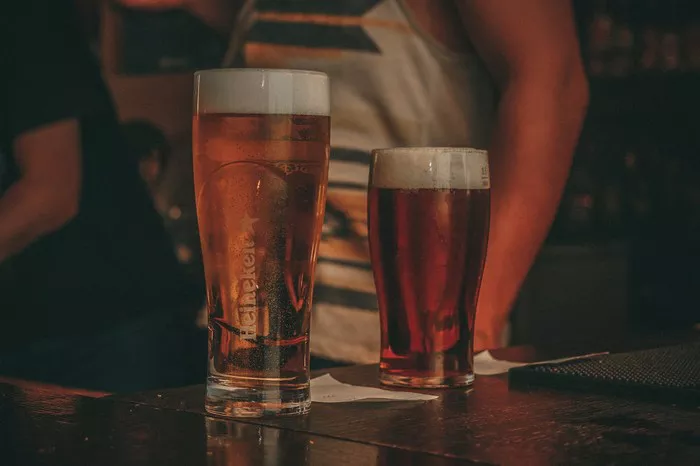Low alcohol beer, also known as non-alcoholic beer or light beer, has gained popularity in recent years due to its lower alcohol content compared to traditional beers. This article explores the intricate process of how low alcohol beer is meticulously crafted, ensuring a delightful beverage while maintaining reduced alcohol levels throughout.
Ingredients Selection and Preparation
The journey of creating low alcohol beer begins with the careful selection and preparation of ingredients. Key components such as malt, hops, water, and yeast are essential in determining both the flavor profile and alcohol content of the final product. Brewers often opt for malt with lower fermentable sugars, as these sugars are crucial in determining the potential alcohol content of the beer. Hops contribute to the aroma and bitterness of the beer, and their selection is pivotal in balancing the flavors in low alcohol variants.
Mashing and Wort Production
The mashing process is fundamental in converting the starches from malt into fermentable sugars. Here, the malt is crushed and mixed with hot water to create a mash. The temperature and duration of mashing are meticulously controlled to ensure optimal conversion of starches into sugars, essential for the subsequent fermentation process. The resulting liquid, known as wort, is then separated from the spent grain husks through lautering.
Boiling and Hop Addition
Once the wort is separated, it undergoes boiling, a critical step where hops are introduced. Hops added during boiling contribute bitterness to the beer while also imparting essential oils that add to its aroma and flavor complexity. For low alcohol beer, brewers often adjust the timing and quantity of hops to achieve a balanced bitterness profile without overpowering the lighter body typical of these beers. Boiling also serves to sanitize the wort, ensuring a sterile environment for fermentation.
Fermentation and Alcohol Reduction
Fermentation is the transformative stage where yeast converts sugars in the wort into alcohol and carbon dioxide. In the case of low alcohol beer, brewers employ specific yeast strains that are less efficient at converting sugars into alcohol, thereby reducing the overall alcohol content. This controlled fermentation process is closely monitored to maintain consistency and achieve the desired alcohol level, typically lower than 0.5% ABV (alcohol by volume) for non-alcoholic beers.
See Also: How much is a case of peroni beer?
Maturation and Flavor Development
Following fermentation, the beer undergoes maturation, a period crucial for flavor development and clarification. During maturation, the beer rests at cool temperatures, allowing flavors to meld and mature. This stage is pivotal in ensuring that low alcohol beers achieve a well-rounded flavor profile despite the reduced alcohol content. Maturation times vary depending on the beer style and desired characteristics, with some beers benefiting from extended periods of conditioning.
Carbonation and Packaging
Carbonation is the final touch that adds effervescence to the beer, enhancing its sensory appeal. Brewers achieve carbonation through natural conditioning with residual yeast or by injecting carbon dioxide directly into the beer. For low alcohol beer, carbonation levels are carefully adjusted to complement the beer’s lighter body and ensure a refreshing drinking experience. Once carbonated, the beer is promptly packaged to preserve its flavor and aroma, typically in bottles, cans, or kegs.
Quality Control and Assurance
Throughout the production process, stringent quality control measures are implemented to uphold the standards of low alcohol beer. From raw ingredient analysis to sensory evaluation of the final product, every stage is meticulously monitored to ensure consistency and excellence. Microbiological testing, flavor profiling, and alcohol content verification are among the many tests conducted to guarantee that each batch meets regulatory requirements and consumer expectations.
Innovations in Low Alcohol Beer Production
Advancements in brewing technology and consumer demand have spurred innovations in low alcohol beer production. Brewers are exploring new techniques such as vacuum distillation and reverse osmosis to further reduce alcohol content while preserving flavor integrity. These methods allow for precise control over alcohol removal without compromising on taste, paving the way for a broader selection of low alcohol beers that cater to diverse preferences and dietary considerations.
Consumer Trends and Market Growth
The growing consumer interest in health-conscious choices and moderation has driven the popularity of low alcohol beers. Market trends indicate a steady rise in demand for lighter beverage options that offer the familiar taste of beer with reduced alcohol content. Brewers worldwide are responding to this trend by expanding their portfolios to include a variety of low alcohol offerings, ranging from non-alcoholic lagers to session IPAs, thereby catering to a diverse audience of beer enthusiasts.
Conclusion
In conclusion, the production of low alcohol beer is a meticulous process that combines tradition with innovation to create flavorful beverages with reduced alcohol content. From ingredients selection to quality control and packaging, each step in the brewing journey plays a vital role in shaping the final product. As consumer preferences continue to evolve, the industry remains committed to crafting high-quality low alcohol beers that deliver on taste, aroma, and overall drinking experience. Whether enjoyed for its refreshing qualities or as part of a balanced lifestyle, low alcohol beer stands as a testament to the artistry and dedication of brewers worldwide.


